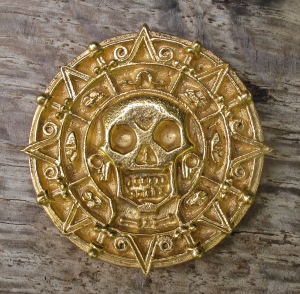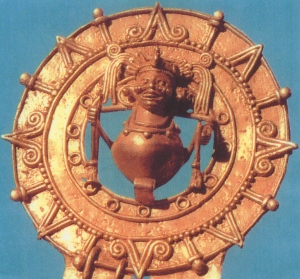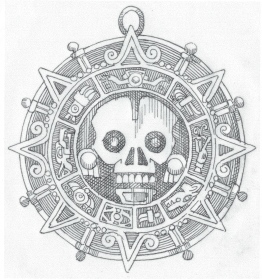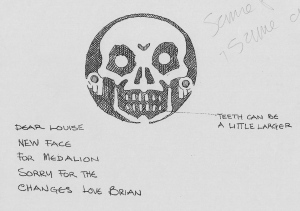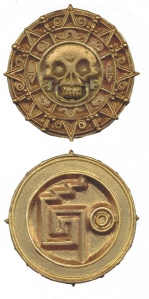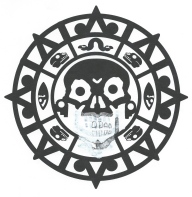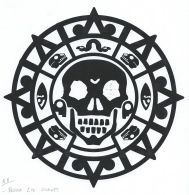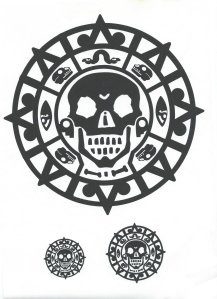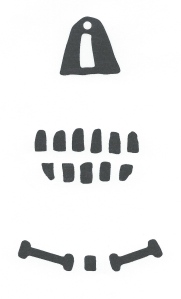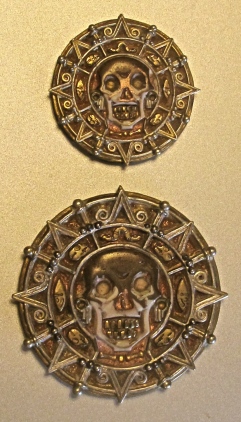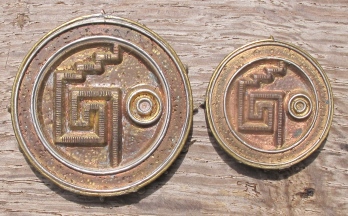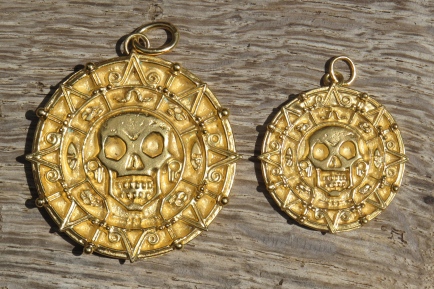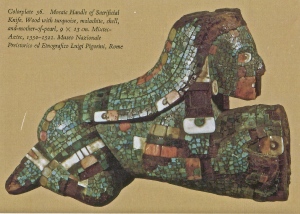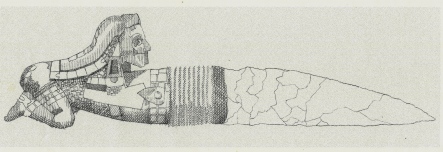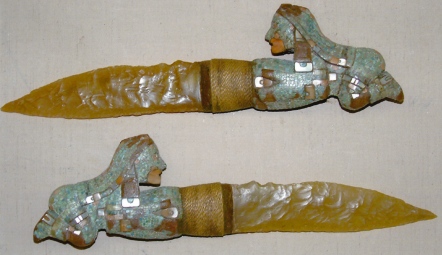When people find out what we did for a living, we usually get asked – ‘What is your favourite film prop?’
It is a difficult question to answer since we made such a wide variety of things over a forty-one year period. It is not always easy to pick one, but what always comes to mind are the Holy Grail and the Grail diary made for ‘Indiana Jones and the Last Crusade’ in 1989. A close second is the Aztec Medallion from the first ‘Pirates of the Caribbean’ in 2002.
Along with Jack Sparrow’s compass for the same film, it was one of the most iconic props we made. At the beginning, however, we were not aware the film was a Disney production, let alone that it was to be the start of a very successful franchise.
It wasn’t all ‘plain sailing’ working with such a talented team of Production Designer, Brian Morris and Art Director, Richard Earl. Brian, who we had worked with many times before, came to our workshop late one afternoon with a pile of books annotated with countless illustrations that he wanted copying – ships, pirates, compasses, and among other things a picture of a golden Aztec finial
which was to form the basis of an Aztec gold coin – part of the Treasure of Cortés – one of the most important props in the first film.
Later, we received a drawing of the proposed coin.
It was to be made in two sizes, 1½” (38mm) and 2⅛” (54mm) diameter, the larger coin to be used for close up. As there was no instruction as to how to make it. Louise decided that the best way to approach constructing the coin was to draw out the various elements separately.
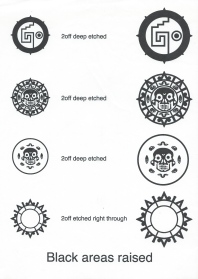
Artwork for the etcher. Notice that the symbols around the central circle have been changed to a second version.
The artwork was done by Thea in our Graphics department and then sent to Mercury Engraving in London to be acid etched in copper. The front and back were etched separately. When assembled these would form a good base for the coin.
The raised ‘wire’ and ball details were made of silver and applied to the front of the coin by Andrew at jewellers Gordon Marks in Cobham. It was then returned to our workshop for further work to be done by Nick.
In the original version the skull was contained within the central circle.
Brian and others in the production decided that in this version the skull was too small, and we were sent another drawing of an enlarged skull, still within the central circle.
After remaking the coin, the comment from the production was that it now looked more like a ‘monkey’s’ skull. So that design was abandoned and a fourth version was then made with a larger skull that broke through the central circle at the bottom.
Finally, a fifth drawing arrived that required the look of the jawbone to be altered and ‘bones’ added under the skull.
This time Nick used resin putty to shape it to the new design. He also removed the original copper symbols and replace them with the new brass symbols, as well as new nostrils and teeth all engraved by Adams Engraving in Woking.
This final version of the coin was approved by Brian and went to Starcast Alloys in Devon to be cast in wax in silicone moulds, then in gilding brass using the ‘lost wax’ method.
https://en.wikipedia.org/wiki/Lost-wax_casting
The back of the coin, which isn’t seen in the film, also went through two versions.
On their return the coins were polished with jewellers rouge on a rag polishing wheel and then sent to Manny Gold at City Plating to be plated in a beautiful mellow gold, the tone matching a sample supplied by Charles Stewart the prop master.
All these alterations took a long time to achieve and Charles Stuart was beginning to get worried that he would not have his props on time for a ‘show and tell’ that had been arranged with the Director Gore Verbinski.
They did get completed on time and we made about a hundred medallions in all – some with chains – and five in the large size.
We also had made for the film 1000’s of silver Pieces of Eight, Gold 2 Escudos and Gold 8 Escudos, cast by Westair in Birmingham from original coins sourced by Richard Varnham at Vale Stamps and Antiques in Blackheath.
There is a scene towards the end of the film where the last remaining coin is thrown into a chest filled with the rest of the treasure. In the same scene Barbossa raises an Aztec dagger with a knapped flint blade.
We were asked to make two of these with a handle to be copied from an original dagger.
It had a very intricate mosaic finish and because we had to produce two identical daggers, we decided to sculpt the handle and use small pieces of eggshell, cut into precise shapes to make the mosaic. Emma who made the handle then fixed these to the surface and a silicone mould was taken. After being cast in resin the mosaic pattern was painted to match the reference and Len at A. E. Ward in London also supplied mother of pearl, cut to specific sizes, to be glued to the handle.
The dagger is seen in close up but Barbossa’s hand obscures the handle. Luckily the blade has a more starring role. Getting a ‘napped flint’ look isn’t easy so we asked a friend, Robert Leighton, if he had such a blade in his collection of Stone Age axes, blades and arrowheads – now in the British Museum. He explained that blades were never that long, so he loaned us two, from which Alastair took moulds and incorporated them into one longer blade. Again a mould was taken and he cast the final two blades in a translucent light brown resin.
We also made Jack Sparrows compass, a dress box, flags, parasols, fans, a sextant, glass rum bottles, bed pans, and more, but they will have to wait for another blog.
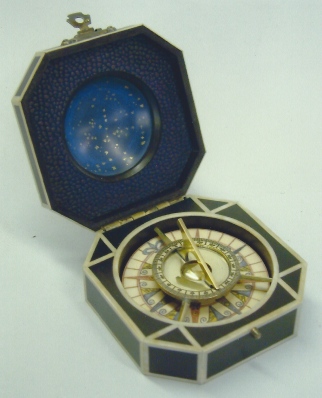
The compass used in the first film before being distressed. We made another version for the second and third films
